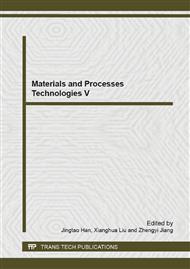p.712
p.717
p.723
p.730
p.734
p.739
p.743
p.747
p.751
Analysis on Bearing Capacity of Retaining Wall with Anchor
Abstract:
The opposite-pull retaining wall, formed by the anchor of both sides opposite-pulling the cantilever retaining wall, is a new type of supporting structure. Comparing with traditional retaining wall, the bearing ratio changes remarkably which will influences the structure stress. In order to popularize and apply the type of retaining wall structure, indoor model is made with different magnitude prestress applied and different magnitude is applied on top of the retaining wall to simulate different filling height. Test shows that as the top load increases the proportion of load beared by anchor decreases while that beared by retaining wall increases and the proportion of load beared by the lower anchor increases gradually. And soil arch effect appears near the anchor. The retaining wall around the anchor need reinforcement treatment during the construction.
Info:
Periodical:
Pages:
734-738
Citation:
Online since:
June 2014
Authors:
Price:
Сopyright:
© 2014 Trans Tech Publications Ltd. All Rights Reserved
Share:
Citation:


